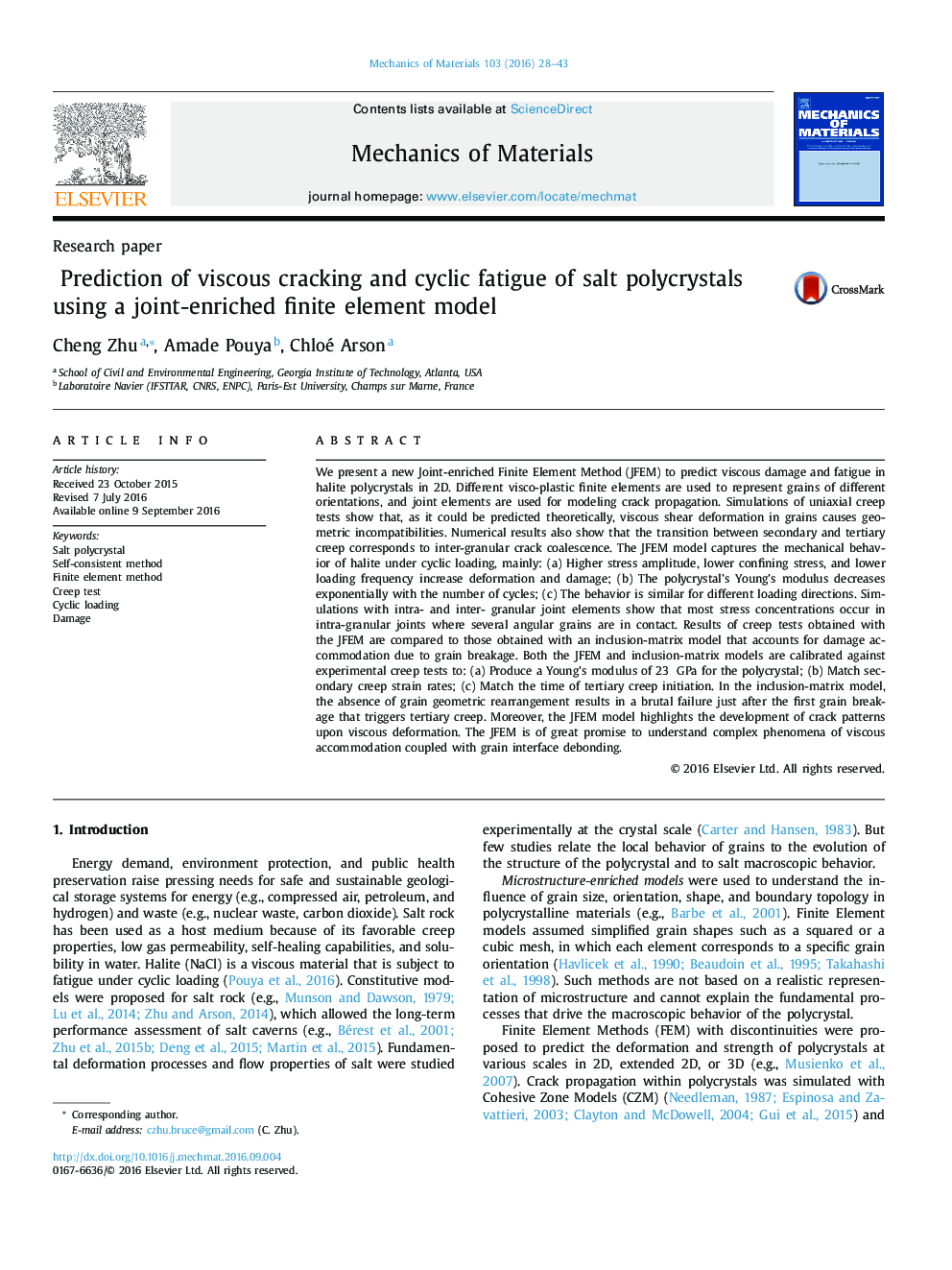| کد مقاله | کد نشریه | سال انتشار | مقاله انگلیسی | نسخه تمام متن |
|---|---|---|---|---|
| 5018556 | 1467436 | 2016 | 16 صفحه PDF | دانلود رایگان |
عنوان انگلیسی مقاله ISI
Prediction of viscous cracking and cyclic fatigue of salt polycrystals using a joint-enriched finite element model
ترجمه فارسی عنوان
پیش بینی کرک چسبناک و خستگی چرخه پلکسیستال های نمکی با استفاده از مدل عنصر محدودی غنی شده مشترک
دانلود مقاله + سفارش ترجمه
دانلود مقاله ISI انگلیسی
رایگان برای ایرانیان
کلمات کلیدی
نمک پلی کریستال، روش خودمختار، روش عنصر محدود تست خزش بارگذاری سیکل، خسارت،
موضوعات مرتبط
مهندسی و علوم پایه
سایر رشته های مهندسی
مهندسی مکانیک
چکیده انگلیسی
We present a new Joint-enriched Finite Element Method (JFEM) to predict viscous damage and fatigue in halite polycrystals in 2D. Different visco-plastic finite elements are used to represent grains of different orientations, and joint elements are used for modeling crack propagation. Simulations of uniaxial creep tests show that, as it could be predicted theoretically, viscous shear deformation in grains causes geometric incompatibilities. Numerical results also show that the transition between secondary and tertiary creep corresponds to inter-granular crack coalescence. The JFEM model captures the mechanical behavior of halite under cyclic loading, mainly: (a) Higher stress amplitude, lower confining stress, and lower loading frequency increase deformation and damage; (b) The polycrystal's Young's modulus decreases exponentially with the number of cycles; (c) The behavior is similar for different loading directions. Simulations with intra- and inter- granular joint elements show that most stress concentrations occur in intra-granular joints where several angular grains are in contact. Results of creep tests obtained with the JFEM are compared to those obtained with an inclusion-matrix model that accounts for damage accommodation due to grain breakage. Both the JFEM and inclusion-matrix models are calibrated against experimental creep tests to: (a) Produce a Young's modulus of 23Â GPa for the polycrystal; (b) Match secondary creep strain rates; (c) Match the time of tertiary creep initiation. In the inclusion-matrix model, the absence of grain geometric rearrangement results in a brutal failure just after the first grain breakage that triggers tertiary creep. Moreover, the JFEM model highlights the development of crack patterns upon viscous deformation. The JFEM is of great promise to understand complex phenomena of viscous accommodation coupled with grain interface debonding.
ناشر
Database: Elsevier - ScienceDirect (ساینس دایرکت)
Journal: Mechanics of Materials - Volume 103, December 2016, Pages 28-43
Journal: Mechanics of Materials - Volume 103, December 2016, Pages 28-43
نویسندگان
Cheng Zhu, Amade Pouya, Chloé Arson,
